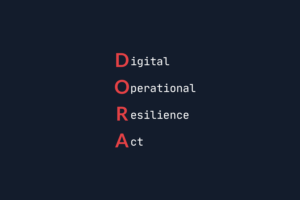AWS Security Testing

According to a Statista report, 49% of respondents admit to running their most significant workloads on AWS1.
AWS offers over 200 services across different categories, such as virtual machines, databases, storage, and more, spanning over 34 geographic regions worldwide. Each service has its own settings, limitations, and caveats. This is why the most common security problems in AWS are closely related to the specific usage of these services. Some examples include:
- Misconfigured S3 buckets exposing sensitive data,
- IAM policies granting excessive privileges on too many resources,
- Unencrypted data,
- EC2 instances unintentionally exposed to Internet-based attacks, providing an entry point to the private network,
- Improper secrets management (e.g., storing access keys in EC2 User Data).
- and more…
Connect with the Cloud Security Expert!

We are realists. We understand that the amount of knowledge needed to efficiently navigate the configuration complexities of some services can be overwhelming. This is why we are here to help you tame this beast and make your environment better and more secure.
Our approach to AWS security testing

Usually, we start the first day of testing by running automated tools and self-crafted scripts that allow us to capture the state of environment’s configuration. We then analyze the output and group the identified misconfigurations. Each finding is manually reviewed before we include it in the report.

We deeply analyze each finding, taking into account the context of the service’s use, the data it processes, and the risks it may pose to the organization. The test cases we build also include AWS CLI commands, allowing you to get the same information on your own without configuring additional tools. If we identify an opportunity to demonstrate to you a specific attack chain of combined misconfigurations – we will do so.

All of this is based on current AWS best practices combined with the persistent desire to popularize the principle of least privileges and zero trust. As a result, you receive a report highlighting the biggest security issues that, under favorable conditions, can be exploited against you.
AWS Security Testing steps
In most of the cases AWS configuration security assessments are carried out in the following steps:
- Getting Read access to your AWS accounts (SecurityAudit managed policy is sufficient).
- Capturing the current state of the environment using automated tools and simple scripts.
- Defining priorities, assumptions, and dependencies.
- Analyzing the results of automated or semi-automated scans.
- Attempting to build attack chains from combined misconfigurations.
- Looking for ways to escalate privileges in AWS.
- Aggregating test results aggregation and preparing the report.
- Providing consultancy on ways to eliminate identified vulnerabilities.
- Verifying the proper vulnerabilities remediation.
The result of the security tests is a detailed report. It consists of an executive summary, detailed description of all vulnerabilities and proposed improvements.
DORA compliance

AWS Security Testing contributes to compliance with DORA principles. It aligns with DORA’s relevance to modern cloud-based DevOps environments.
Get a quote for your project

Book a call or fill out our contact form to get a quote for a AWS Security Testing. Every organization is different – if necessary, we’ll get in touch with you to determine the specifics of your needs and the broader context of security testing.






